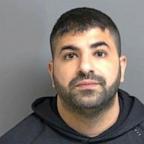Chicago Kids Learn Community Organizing in Casablanca's Slums
What can Chicagoans learn from the slums of Casablanca? A lot, it turns out.
CASABLANCA, Morocco, May 27, 2010 -- Turning the corner into the slums of Sidi Moumen on the outskirts of Casablanca, the pavement ends and the buildings give way to what looks like a garbage dump -- crumpled plastic bottles, paper, metal and broken glass.
A low, rambling mess of corrugated tin and wood stretches over the reddish dust, and in many doorways, thin sheets flutter listlessly in the hot air. A few sheep huddle together near a haphazard structure of old chairs, ladders and rotting boards, and a rooster picks its way over the dirt.
Every single one of the suicide bombers that ripped through downtown Casablanca in 2003 -- and again in 2007 -- came from this place. More than 350,000 people live here, with no running water, no toilets, no sewer system, no proper doors.
"When you have nothing, you have nothing to care about," said Boubker Mazoz, a local man who is received as both rock star and angel around these parts. Everywhere he goes, he attracts a crowd -- men, women and children shouting greetings, reaching out to clasp his hands, kiss his cheek, and ask for help. And he is doing everything he possibly can.
"The best thing to do is to change these conditions so these people can feel that they are cared for," he says. "That they count as citizens, that they can participate in the development of their country, that they can have the same opportunity."
After the 2003 bombings, when 14 suicide bombers killed 33 people in downtown Casablanca, Mazoz, who works for the U.S. Consulate here, decided it was time to reach out to children and teenagers living in the worst of the city's notorious slums. With the support of the Casablanca Chicago Sister Cities Association, he started an organization called IDMAJ -- "integration" in Arabic -- to give children power through education.
Why integration?
Because, he says, "I feel these people have been left out." IDMAJ is about finding a way to include them.
Since 2006, Mazoz has recruited more than 60 young volunteers from the neighborhoods of Sidi Moumen and Ben M'Sik -- which includes one of the poorest slums known simply as al Hofra, or "the hole" -- to serve as teachers, tutors and mentors to more than 500 at-risk children.
"We said, why not give a chance to these young people to lead, to have a chance to initiate things and to be responsible," says Mazoz. And so far, IDMAJ, according to all involved, has been a resounding success. "We discovered a lot of talents, we discovered a lot of brilliant people that can have a brilliant future," Mazoz says. "They were not given the chance, they were not given the opportunity."




